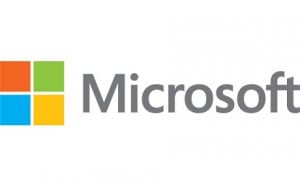4 key benefits of re-hosting with Microsoft Azure
There are many companies in the world today looking to increase efficiency through data center transformation – and one of the primary ways they’re...

With the arrival of Windows Server 2016, customers can soon be running a cloud optimized operating system that supports current workloads, and offers new technologies to simplify the transition to cloud computing.
In addition to the many networking, compute and storage advances included in Windows Server 2016, Microsoft is also transitioning from per-processor to per-core licensing.
Moving Windows Server and Microsoft System Center 2016 to per-core licensing aligns the servers to a common and consistent licensing denomination that is already a standard measure for capacity across environments: cores. This also brings Windows Server into alignment with the per-core licensing model that applies to Microsoft’s SQL Server 2016 and Azure products.
One of the primary drivers for rethinking the licensing model is better support of the increasingly common hybrid cloud model. By moving from processors to physical cores, Microsoft can provide consistent licensing across its public and private cloud offerings. This simplifies accounting as IT moves cores to the cloud and back. Better still, the typical Microsoft customer should not see a big impact to the bottom line due to the transition since the previous per-processor model had already factored in the tremendous growth in cores-per-processor.
Core licenses will be sold in packs of two. Each processor will need to be licensed with a minimum of eight cores, or four two-core packs. Each physical server, including one-processor servers, will need to be licensed with a minimum of 16 cores or eight two-core packs. The net result is that licenses for servers with eight cores or less per processor will come in at about the same price as the 2012 R2 two-processor license price. For incremental licenses needed above the required eight cores per processor, customers can purchase additional core licenses in packs of two (one two-core pack) for gradual increases in core density growth.
As with any significant change, we expect our customers will have questions about getting the most value for their licensing dollars during the “proc to core” transition. A good first step would be to schedule a Zones Software Landscape Assessment that will give you an accurate picture of your current environment, including processor and core counts, as well as the licenses running within it.
No doubt about it: Microsoft’s move to per-core licensing will change the way you pay for your software licenses. For most organizations, the bottom line impact will be minimal, but the devil – as always – will be in the details. Details like core-counts, active and expired licenses in the environment, etc.
A Zones Software Landscape Assessment provides complete visibility into your entire software environment, giving you the kind of accurate baseline data you need to move forward with confidence.
Using a nonintrusive virtual appliance, we quickly poll the environment and develop a software inventory. The result is insight, discovery, and analytics that optimize software utilization and contracts to enhance overall efficiency.
Leveraging that data, Zones solution architects will help you design a strategy for improving the strengths and eliminating any of the risks they find. Our report gives you a detailed account of your license entitlements, what is deployed, and how they are assigned.
To schedule your Zones Software Landscape Assessment, contact your Zones account executive or call 800.408.ZONES today.
This article originally appeared in the Fall 2016 edition of Solutions by Zones magazine.
View online

There are many companies in the world today looking to increase efficiency through data center transformation – and one of the primary ways they’re...

All around the world, companies are in the midst of a digital transformation. They’ve discovered that by tapping into new technologies – such as...

1 min read
All around the business world, there’s an undeniable trend taking place – organizations are investing in data center transformation at unprecedented...